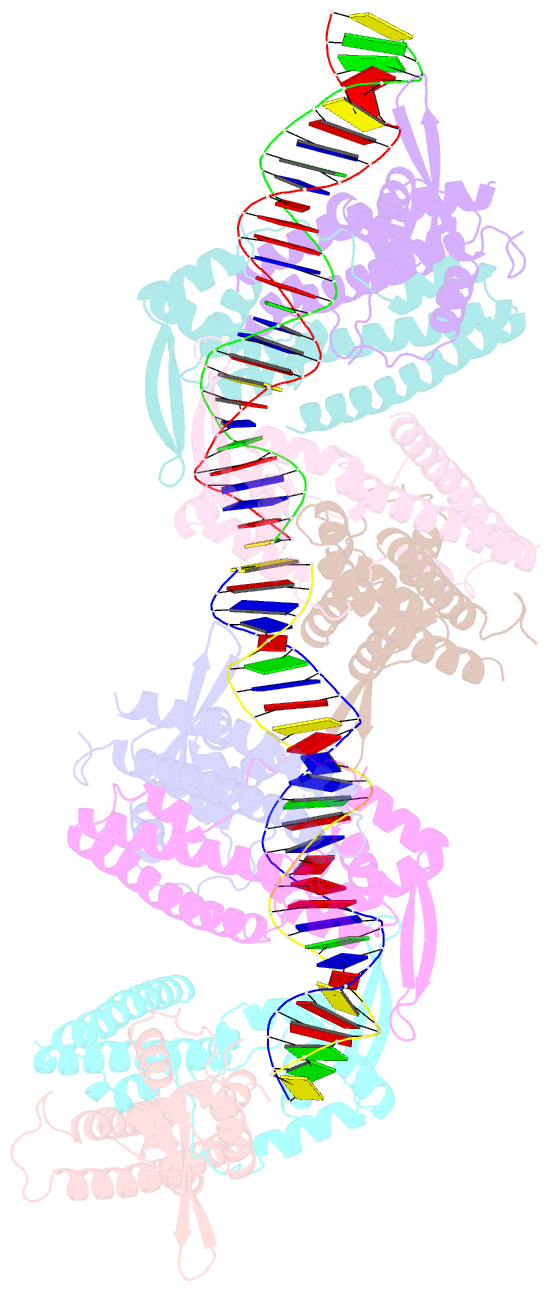Summary information and primary citation
- PDB-id
- 5x11; SNAP-derived features in text and JSON formats;
DNAproDB
- Class
- transcription-DNA
- Method
- X-ray (2.65 Å)
- Summary
- Crystal structure of bacillus subtilis padr in complex with operator DNA
- Reference
- Park SC, Kwak YM, Song WS, Hong M, Yoon SI (2017): "Structural basis of effector and operator recognition by the phenolic acid-responsive transcriptional regulator PadR." Nucleic Acids Res., 45, 13080-13093. doi: 10.1093/nar/gkx1055.
- Abstract
- The PadR family is a large group of transcriptional regulators that function as environmental sensors. PadR negatively controls the expression of phenolic acid decarboxylase, which detoxifies harmful phenolic acids. To identify the mechanism by which PadR regulates phenolic acid-mediated gene expression, we performed structural and mutational studies of effector and operator recognition by Bacillus subtilis PadR. PadR contains an N-terminal winged helix-turn-helix (wHTH) domain (NTD) and a C-terminal homodimerization domain (CTD) and dimerizes into a dolmen shape. The PadR dimer interacts with the palindromic sequence of the operator DNA using the NTD. Two tyrosine residues and a positively charged residue in the NTD provide major DNA-binding energy and are highly conserved in the PadR family, suggesting that these three residues represent the canonical DNA-binding motif of the PadR family. PadR directly binds a phenolic acid effector molecule using a unique interdomain pocket created between the NTD and the CTD. Although the effector-binding site of PadR is positionally segregated from the DNA-binding site, effector binding to the interdomain pocket causes PadR to be rearranged into a DNA binding-incompatible conformer through an allosteric interdomain-reorganization mechanism.





